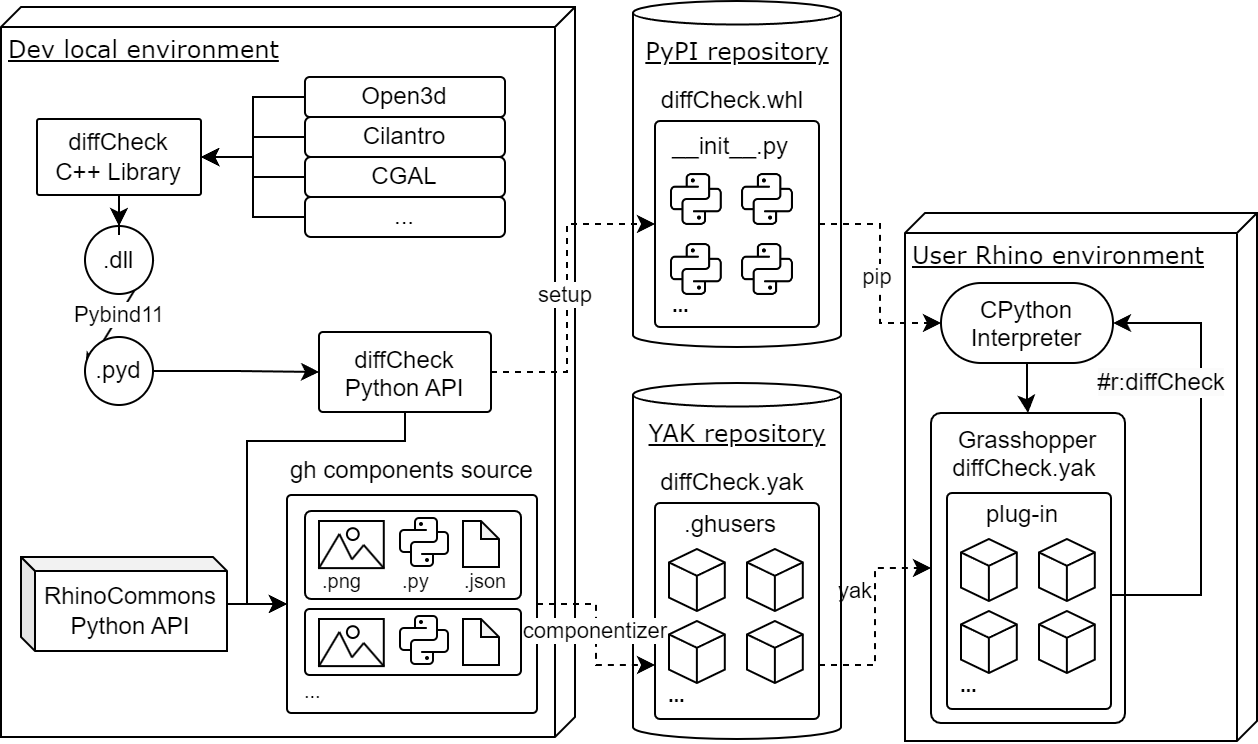diffCheck architecture#
The software architecture of DF is organized into three main sections.
a) C++: The first foundational portion of the source code is represented by a C++ umbrella library regrouping low-level dependencies such as Open3d, CGAL and Cilantro which power the back-end of the most complex and demanding computational functionalities DF can offer.
b) PythonAPI: The previous portion portion is wrapped into the second DF’s component: an API written in Python 3.9.1 and distributed via PyPI (Python Package Index).
c) GHPlugin: Finally, the GH Python-based plug-in represents only the top-level visual scripting DF’s interface.
Here is a diagram of the software architecture:

With Rhino v.8’s integration of CPython into its .NET ecosystem, we developed a fully Python-based Grasshopper plug-in. Distributed through Rhino’s Yak manager, it requires no extra installations. Inspired by the Compas framework, the plug-in is composed entirely of .ghuser objects, supporting CI practices with automatic component documentation. Additionally, we believe a Python-based plug-in encourages broader contributions, as Python’s simplicity and widespread use make it more accessible to the digital fabrication community.
